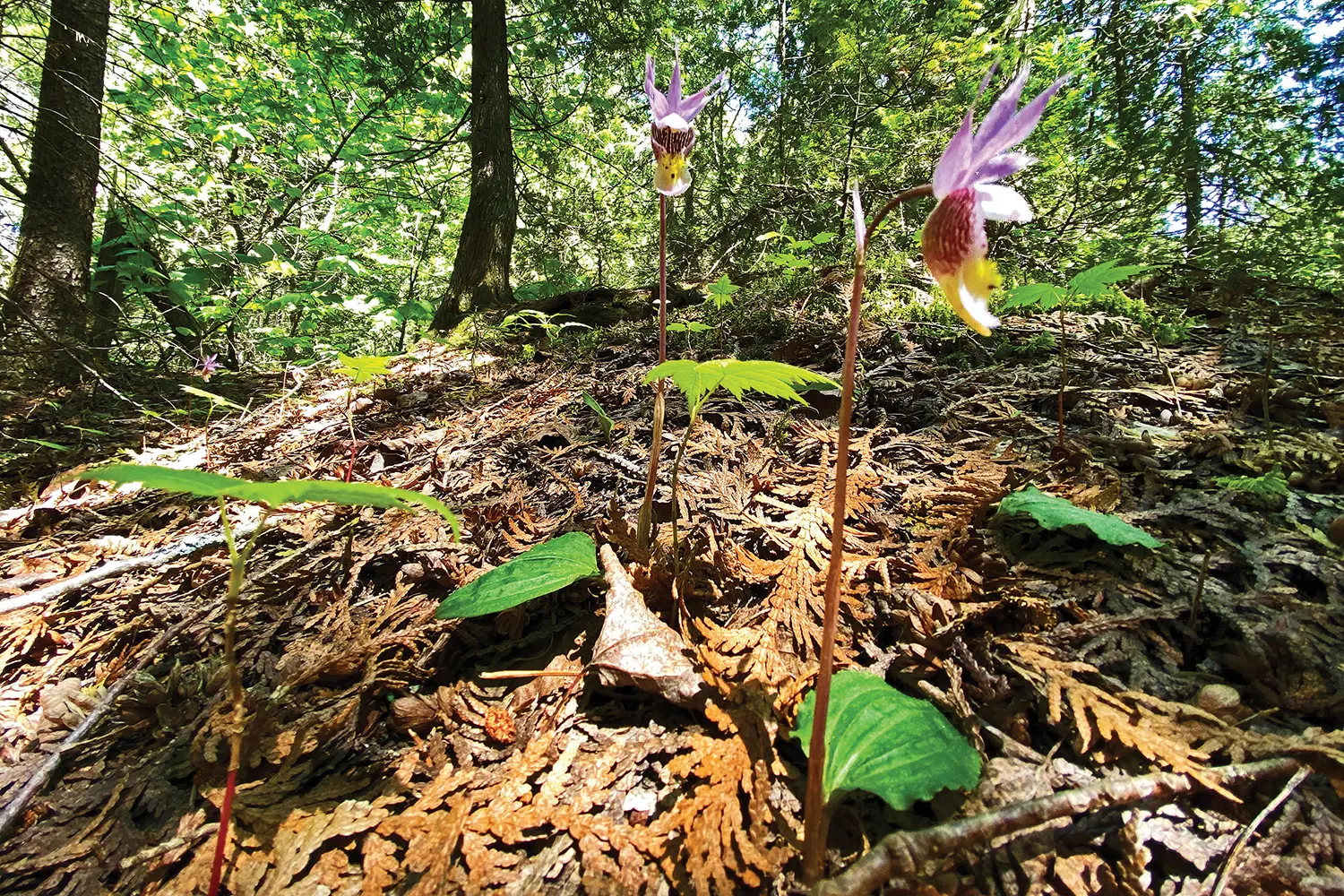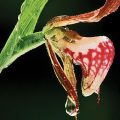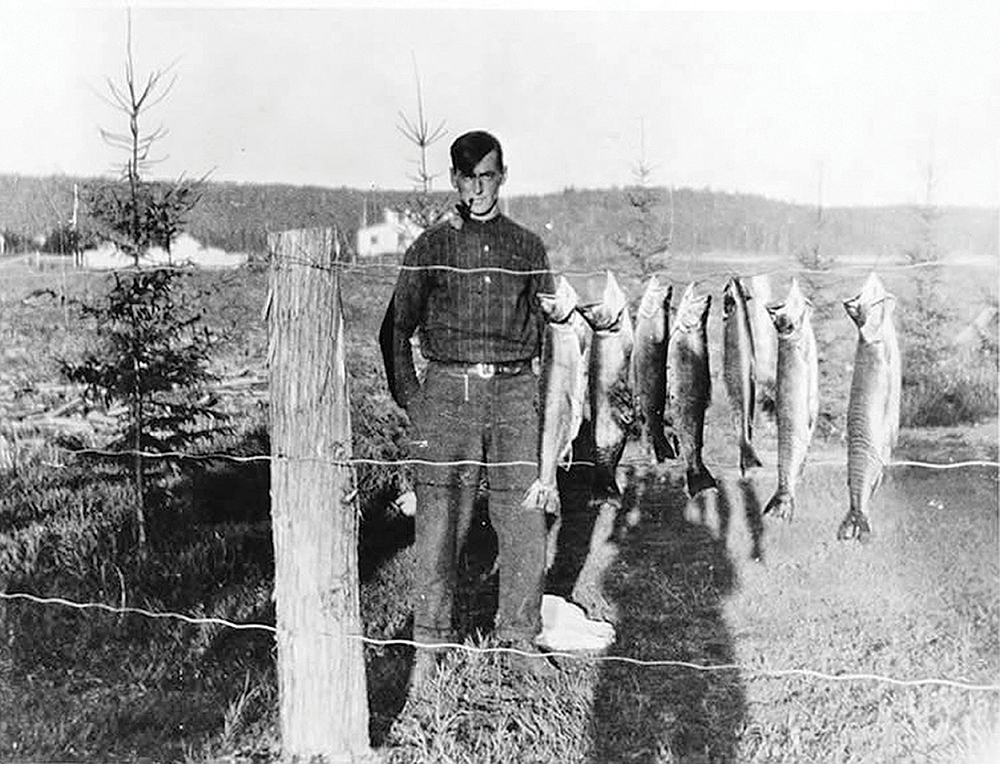by Roger Klein // Photo By Willy Waterton


Finding the elusive calypso orchid (Calypso bulbosa) is described as a “supreme moment” for the Scottish-born American naturalist John Muir, who, in 1864, documented the flower in the Southern Georgian Bay region while looking for a sheltered nook in which to spend the night outdoors.
“I never before saw a plant so full of life; so perfectly spiritual, it seemed pure enough for the throne of the Creator. I felt as if I were in the presence of superior beings who loved me and beckoned me to come. I sat down beside them and wept with joy. Could angels in their better land show us a more beautiful plant? How good is our Heavenly Father in granting us such friends as these plant creatures, filling us wherever we go with pleasure so deep, so pure, so endless,” Muir wrote in a letter published in The Boston Record in 1866.
Muir described his very first encounter with the plant in the wildest Canadian woods where he had spent days trekking. “Hunger and weariness vanished, and only after the sun was low in the west, I plashed on through the swamp, strong and exhilarated as if never more to feel mortal care,” he wrote.
Muir spent time in this region, working at the Trout family mill on the Bighead River in Meaford while avoiding personal involvement in the American Civil War.
It was Muir’s passion that great wilderness areas be protected as they existed in the absence of human industrial influence. Muir’s writings ultimately convinced the U.S. government to protect Yosemite, Sequoia, Grand Canyon and Mount Rainier as national parks. Muir also founded the Sierra Club and served as its first president, a position he held until his death in 1914.














